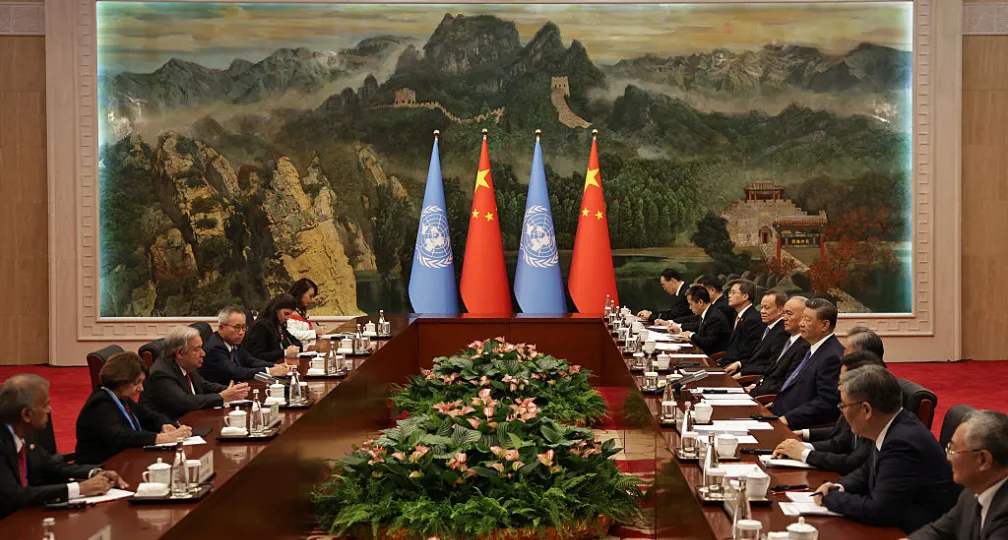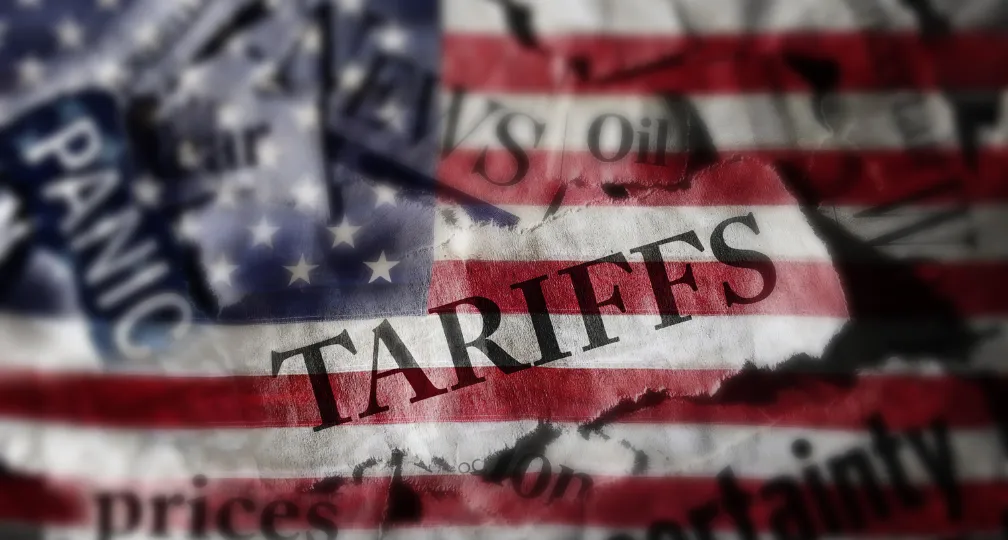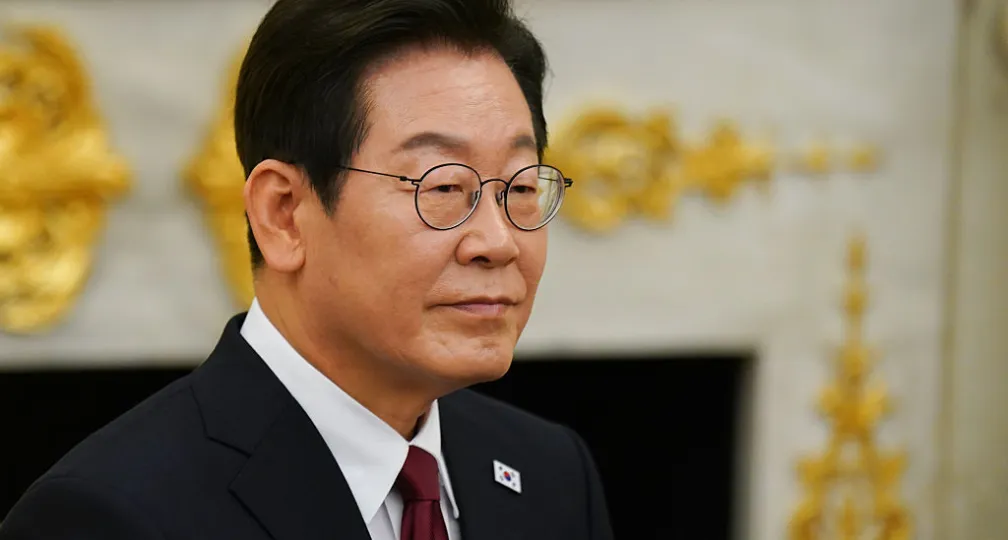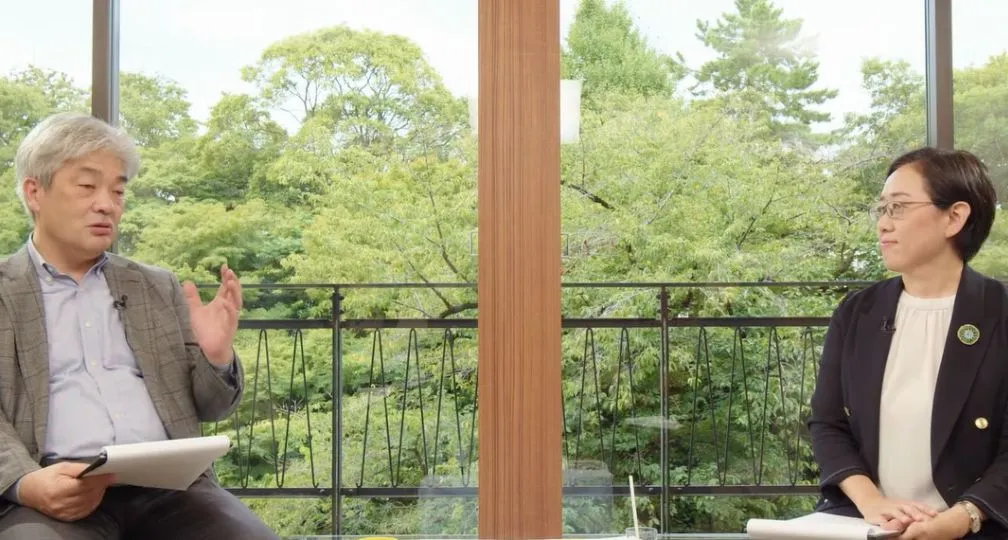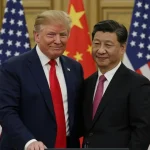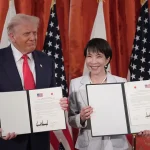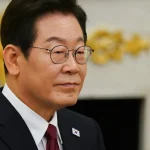The dollar paradox: Toward a bifurcated currency order?
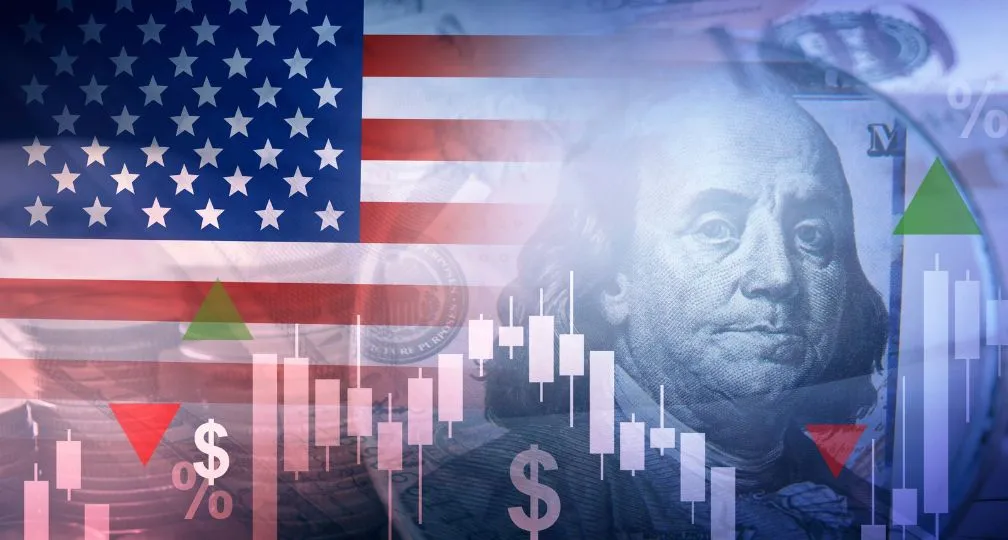
The latest regulatory developments on economic security & geoeconomics
By Paul Nadeau, Visiting Research Fellow, Institute of Geoeconomics (IOG)
Trump Administration Announces Fees for China-Built Ships Visiting U.S. Ports: The Trump administration released a final plan to impose fees on China-linked ships that visit U.S. ports. The plan follows a petition by the United Steelworkers and other unions under the terms of Section 301 of the Trade Act of 1974 which allows the President to impose tariffs in response to unfair foreign trade practices and is part of the Trump administration’s efforts to revive the U.S. shipbuilding industry. Under the plan, which will go into effect on October 14, Chinese ship owners and operators will see fees $50 per net ton of cargo with the fee increasing by $30 each year for the next three years, Chinese-built ships will see $18 per ton or $120 per container, also rising over the next three years, and non-U.S. built ships carrying cars will be charged $150 per vehicle. Fees will be applied once per voyage and ships will not be charged more than five times per year. Empty vessels that arrive at U.S. ports to carry bulk cargo like coal or grain, vessels that travel between U.S. ports and Caribbean islands, and ships transiting the Great Lakes are exempted from the new rules. The proposed fees are significantly lower than the $1.5 million per ship that was initially proposed in February.
Relatedly, the Office of the U.S. Trade Representative also announced a notice of proposed action to impose tariffs of up to 100 percent on ship-to-shore cranes and other cargo handling equipment from China. The tariffs would also be imposed under Section 301 provisions and a public hearing on the proposed tariffs is set for May 19.
U.S. Announces Tariffs on Solar Panels from Southeast Asia: The U.S. Commerce Department proposed tariffs solar panels from Cambodia (3521 percent), Malaysia (41 percent), Thailand (375 percent), and Vietnam (395.9 percent) following a year-long investigation requested by U.S. domestic solar manufacturers into whether solar panels manufactured in these countries unfairly benefited from government subsidies and are being sold in the United States at rates lower than the cost of production. There has been concern by U.S. solar manufacturers that Chinese solar companies were avoiding tariffs by establishing operations in Southeast Asia. The International Trade Agency will vote on the proposed tariffs in June.
UK Announces New Sanctions Package on Russia: On April 24, the British government announced 150 new trade sanctions against Russia focusing on cutting off the export of technology and software, including a ban the export of gaming console controllers to Russia, alleging that the controllers are being used to pilot drones in its invasion of Ukraine. The new package also prohibits the export of chemicals, electronics, machinery and metals to limit Russia’s military and industrial capabilities.
BIS Announces Section 232 Investigations into Pharmaceuticals and Semiconductors: On April 16, the U.S. Commerce Department’s Bureau of Industry & Security (BIS) announced investigations into the national security implications of imports of pharmaceuticals and semiconductors and semiconductor manufacturing equipment. The investigations have been initiated under the provisions of Section 232 of the Trade Expansion Act of 1962 which allows the President to restrict imports in response to national security challenges. Section 232 investigations are completed within 270 days, at the conclusion of which the President decides on retaliatory actions, including tariffs.
OFAC Sanctions Yemen Bank: On April 17, the U.S. Treasury Department’s Office of Foreign Assets Control (OFAC) sanctioned the Yemen-based International Bank of Yemen Y.S.C. (IBY) for its financial support to Ansarallah, more commonly known as the Houthis. The announcement from the Treasury Department described the sanctions as complementing the “whole of government” effort to prevent the Houthis’ attacks on shipping in the Red Sea.
China, U.S. Sanction Officials over Hong Kong: On April 21, China announced sanctions on some U.S. members of Congress, government officials, and NGO leaders who “have performed poorly” on Hong Kong related issues but did not provide details on specific individuals who have been sanctioned. The announcement comes in response to U.S. sanctions in March against six Chinese and Hong Kong officials who are involved in “transnational repression” and other acts to erode Hong Kong’s autonomy, including Justice Secretary Paul Lam, security office director Dong Jingwei and former police commissioner Raymond Siu.
China Planning to Lift Sanctions on EU MPs: According to a report in the German Suddeutsche Zeitung, China is preparing to remove sanctions on European lawmakers it imposed four years ago in retaliation for Western sanctions over human rights concerns in Xinjiang.
Analysis: The dollar paradox: Toward a bifurcated currency order?
By Andrew Capistrano, Visiting Research Fellow, Institute of Geoeconomics (IOG)
The US dollar, long the world’s reserve currency, presents a paradox for the Trump administration. On the one hand, the dollar’s unparalleled utility bestows many privileges like the ability to borrow cheaply, the persistent demand it creates for US Treasuries, and the geopolitical leverage that comes from overseeing its role in the international financial system. Yet the advantages of having “seniority” as a reserve currency can also impose burdens. As the trading system fragments, and as trust in Western financial neutrality wanes, the US is responsible for managing a currency that serves both national interests and global functions.
At times, these two purposes align and the “privilege-burden” paradox resolves itself. When trading partners like the EU or Japan allow the dollar to trade freely, the US enjoys the benefits of transparency, efficient capital flows, and market-based feedback. But when the dollar is used in financial systems that deliberately repress price signals—like China’s—the US shoulders the hidden cost of distorted capital flows, inflated asset bubbles, and misallocated global savings. In these cases, the dollar’s status morphs from strategic asset to structural liability, which is amplified by the overall competitive dynamic that increasingly defines US-China relations.
Trump’s unorthodox trade policy suggests he may be open to unorthodox currency policy. However, since he has made it clear he wants the dollar to remain supreme, he will have to somehow square the national interest with the two functions of a reserve currency.
First, the dollar must be neutral, serving as an impartial medium of exchange, unconditioned by political alignment. Second, the dollar must be reliable, maintaining its value, liquidity, and accessibility regardless of circumstance. For decades, these characteristics allowed it to denominate reserve assets held by central banks and sovereign wealth funds, and also function as a trading currency trusted by companies and governments worldwide. Even US adversaries continue to price commodities in dollars and hold Treasuries.
But dollar neutrality has been undermined by its “weaponization” through financial sanctions. The freezing of Russia’s central bank reserves following its 2022 invasion of Ukraine marked a turning point. For many nations, especially those not aligned with the US, the dollar appears less like a neutral medium of exchange and more like a tool of geopolitical coercion. As a result, several countries have taken steps to hedge against dollar exposure by accumulating gold, building alternative payment platforms, and promoting regional currencies.
Just because no viable alternative to the dollar has so far emerged, this trend suggests US currency policy cannot remain static. It appears that the future of the dollar will not hinge solely on maintaining its dominance—but rather on evolving that dominance to meet the demands of a more fractured, multipolar world. In fact, such an evolution might even resolve the “privilege-burden” paradox.
One potential solution may come from digital finance. Stablecoins such as USDT (USD Tether) and USDC (USD Coin) offer a way for the dollar to evolve while retaining its global footprint—allowing the US to export dollar liquidity without the burden of political entanglement. Pegged to the dollar and often backed by Treasuries, these digital tokens circulate on decentralized networks, bypassing traditional channels like SWIFT. In politically or financially repressed environments, stablecoins can reintroduce a neutral dollar into local markets, allowing for price discovery and capital flows that remain outside official oversight but ultimately funnel value back into the US financial system.
In short, stablecoins enable the US to extend the dollar’s reach and retain dollar neutrality without incurring the full costs of accommodating politically hostile or economically misaligned trading partners. This is where separating the dollar’s dual identity becomes crucial: differentiating from the trading dollar (used for contracts, prices, and liquidity) and the reserve dollar (held by states and investors). In many places, especially outside the US alliance network, stablecoins could enable trading in dollars without full financial alignment. They effectively reintroduce a “neutral dollar” for transactional use, meeting demand for dollar-pegged assets that impart reliability, liquidity, and convenience, while ensuring reserve dollars are not inefficiently concentrated in adversarial hands.
Such an arrangement could conceivably flow from an increasingly bifurcated global order. Within a US-aligned zone, the dollar would function conventionally, supported by open capital accounts, floating exchange rates, and transparent institutions. Outside this bloc, however, the dollar could still circulate in digital form, detached from institutional oversight but still underpinning trade and investment. There, others could continue to use the dollar through stablecoin proxies, but without participating in US-led institutions or policy coordination. David Sacks, Trump’s “crypto czar” and Chair of the Council on Science and Technology, has hinted that stablecoins could allow the US to maintain financial influence without overextension.
Bifurcation, in this sense, would not signal the dollar’s decline. It preserves demand for US debt, reinforces the dollar’s centrality in global finance, and reduces the incentive for adversarial countries to construct entirely separate monetary networks. At the same time, it allows the US to reduce its exposure to the regulatory and economic distortions that arise from accommodating opaque and politicized financial systems.
It is worth noting that some of Trump’s key advisors appear to envision a future where the dollar’s role is reinforced via strategic alignment among US allies and key trading partners. They want to consolidate a “trusted economic zone”, anchored by the dollar, that integrates trade, currency, and security policy. Partners who share not just security interests but also a commitment to financial openness and institutional credibility may be offered preferential access to conventional dollars. Outside this core, the dollar could continue to function in alternative forms like stablecoins. In effect, the dollar becomes both a sovereign instrument and a decentralized asset, adaptable to different political and economic contexts.
By divorcing the political and economic aspects of dollar usage, the US may actually reinforce its global utility, particularly in regions skeptical of Western governance frameworks or in the wake of a long-term US-China trade war. There is also a potential liberalizing feedback loop: as dollar-pegged stablecoins permeate closed economies like China’s, they could undermine domestic financial controls, force better price discovery, and exert pressure for reform—from the outside in.
At present, there is little evidence that the dollar is about to be usurped as the world’s reserve currency. But to retain the privileges of dominance while reducing the burdens of distortion, the US may need to innovate and build alternative channels for dollar access. Ultimately, the challenge is not to defend the dollar’s hegemony at all costs. It is to preserve its usefulness across different regimes—liberal and illiberal, aligned and adversarial—without compromising its role as a global public good. In other words, the privilege of the dollar can be sustained, but only if the burdens are recognized, rebalanced, and strategically redistributed.
(Photo Credit: shutterstock)
Disclaimer: The views expressed in this IOG Economic Intelligence Report do not necessarily reflect those of the API, the Institute of Geoeconomics (IOG) or any other organizations to which the author belongs.
API/IOG English Newsletter
Edited by Paul Nadeau, the newsletter will monthly keep up to date on geoeconomic agenda, IOG Intelligencce report, geoeconomics briefings, IOG geoeconomic insights, new publications, events, research activities, media coverage, and more.



Visiting Research Fellow
Andrew Capistrano is Director of Research at PTB Global Advisors, a Washington DC-based geopolitical risk consulting firm. Specializing in economic competition between the US/EU and China, he analyzes how trade, national security, and industrial policies impact markets, and his firm’s clients include Japanese corporations and government agencies. He previously worked in Tokyo at the US Embassy’s American Center Japan and as a research associate at the Rebuild Japan Initiative Foundation / Asia-Pacific Initiative. Dr Capistrano holds a BA from the University of California, Berkeley; an MA in political science (international relations and political economy) from Waseda University; and a PhD in international history from the London School of Economics. His academic work focuses on the diplomatic history of East Asia from the mid-19th to the mid-20th centuries, applying game-theoretic concepts to show how China's economic treaties with the foreign powers created unique bargaining dynamics and cooperation problems. During his doctoral studies he was a research student affiliate at the Suntory and Toyota International Centres for Economics and Related Disciplines (STICERD) in London.
View Profile
Visiting Research Fellow
Paul Nadeau is an adjunct assistant professor at Temple University's Japan campus, co-founder & editor of Tokyo Review, and an adjunct fellow with the Scholl Chair in International Business at the Center for Strategic and International Studies (CSIS). He was previously a private secretary with the Japanese Diet and as a member of the foreign affairs and trade staff of Senator Olympia Snowe. He holds a B.A. from the George Washington University, an M.A. in law and diplomacy from the Fletcher School at Tufts University, and a PhD from the University of Tokyo's Graduate School of Public Policy. His research focuses on the intersection of domestic and international politics, with specific focuses on political partisanship and international trade policy. His commentary has appeared on BBC News, New York Times, Nikkei Asian Review, Japan Times, and more.
View Profile-
 India - Japan: The Glimpse of a Shared Vision2025.12.05
India - Japan: The Glimpse of a Shared Vision2025.12.05 -
 Beijing’s ‘Globalist’ Agenda Under Trump 2.02025.12.01
Beijing’s ‘Globalist’ Agenda Under Trump 2.02025.12.01 -
 Trump’s Tariffs Might Be Here to Stay – No Matter Who’s in Power2025.11.28
Trump’s Tariffs Might Be Here to Stay – No Matter Who’s in Power2025.11.28 -
 The long road to a South Korea-U.S. trade deal2025.11.26
The long road to a South Korea-U.S. trade deal2025.11.26 -
 Event Report: The Trump Tariffs and Their Impact on the Japanese Economy2025.11.25
Event Report: The Trump Tariffs and Their Impact on the Japanese Economy2025.11.25
 Event Report: The Trump Tariffs and Their Impact on the Japanese Economy2025.11.25
Event Report: The Trump Tariffs and Their Impact on the Japanese Economy2025.11.25 The Real Significance of Trump’s Asia Trip2025.11.14
The Real Significance of Trump’s Asia Trip2025.11.14 Can Takaichi Build on a Successful Summit?2025.10.31
Can Takaichi Build on a Successful Summit?2025.10.31 The long road to a South Korea-U.S. trade deal2025.11.26
The long road to a South Korea-U.S. trade deal2025.11.26 India’s Structural Reforms: Opportunities and Risks2025.11.14
India’s Structural Reforms: Opportunities and Risks2025.11.14



